Some of the links in this post may be affiliate links.
Lantanas are one of the best annuals for full sun. Not only are they super easy to care for in pots, but they are also deer resistant, heat tolerant and bloom their heads off for you.
They also attract a variety of insect pollinators. For all these reasons, I grow lantana plants in my garden every year without fail.
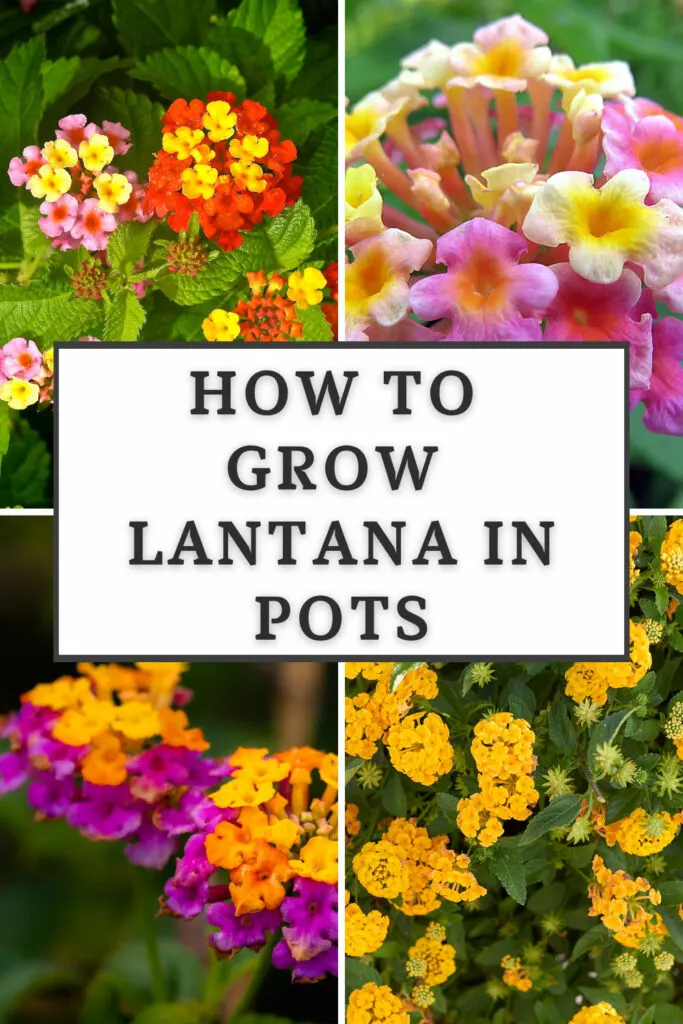
Keep reading to discover more about how to care for these remarkable plants, as well as get a sneak peek on all the pollinators that they attract.
I’ve spotted some beautiful pollinators and have included photographs at the end of this post from my own garden.
Table of Contents
HOW TO GROW LANTANA IN POTS
Here are some important growing tips on growing Lantana in pots.
LIGHT
Lantanas require a sunny spot for best flower production, so choose a location that has at least half a day or more of direct sun. If all you have are shady locations, it is best to avoid Lantana.
Even if you don’t have a location that gets full sun all day, your plant will still bloom pretty well with a good 4-5 hours of direct sunlight each day. But more is better!
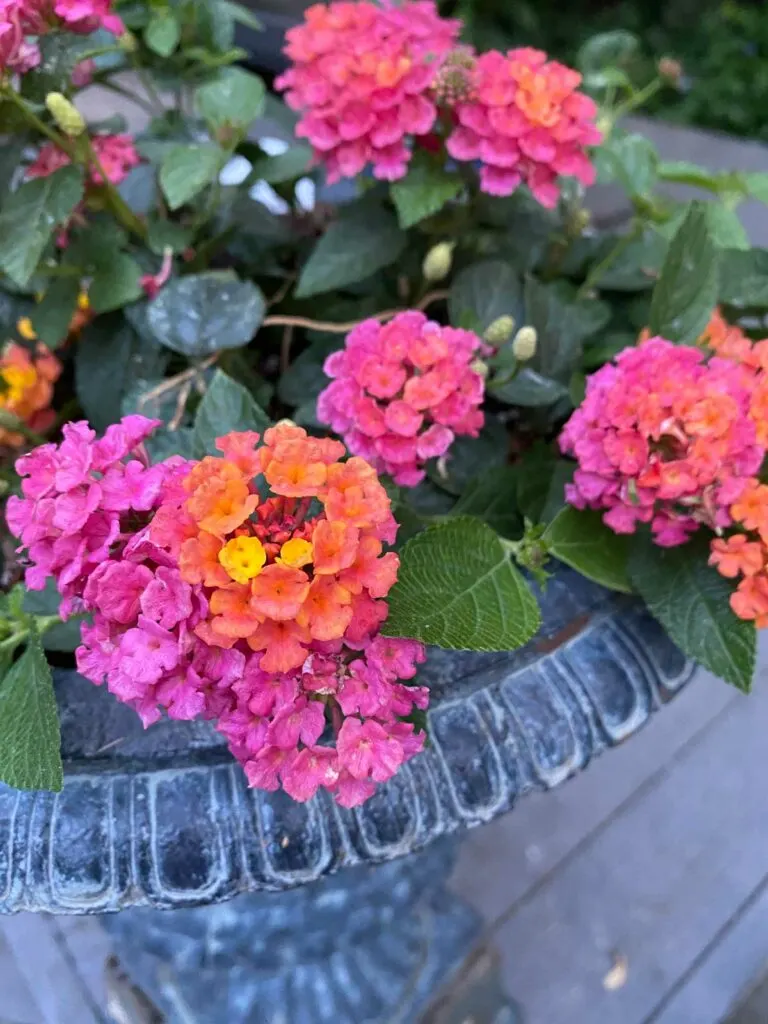
WATERING
Regular watering is necessary, but you should still allow the top 1-2 inches of soil to dry out in between watering. When you do water, always water thoroughly.
Lantana does not like soggy soil, so always allow at least the top inch of soil to dry out otherwise root rot will be a concern.
They don’t like to go completely dry for too long either though, and if you do let this happen, you’ll see the whole plant wilt. Try not to let it get to this point as it will stress your plant.
Once established though, they are pretty drought-tolerant.
If the surface of the soil still feels damp, hold off on watering. During periods of hot weather during the summer months, you will probably need to water daily, but use the guidelines above to determine when to water.
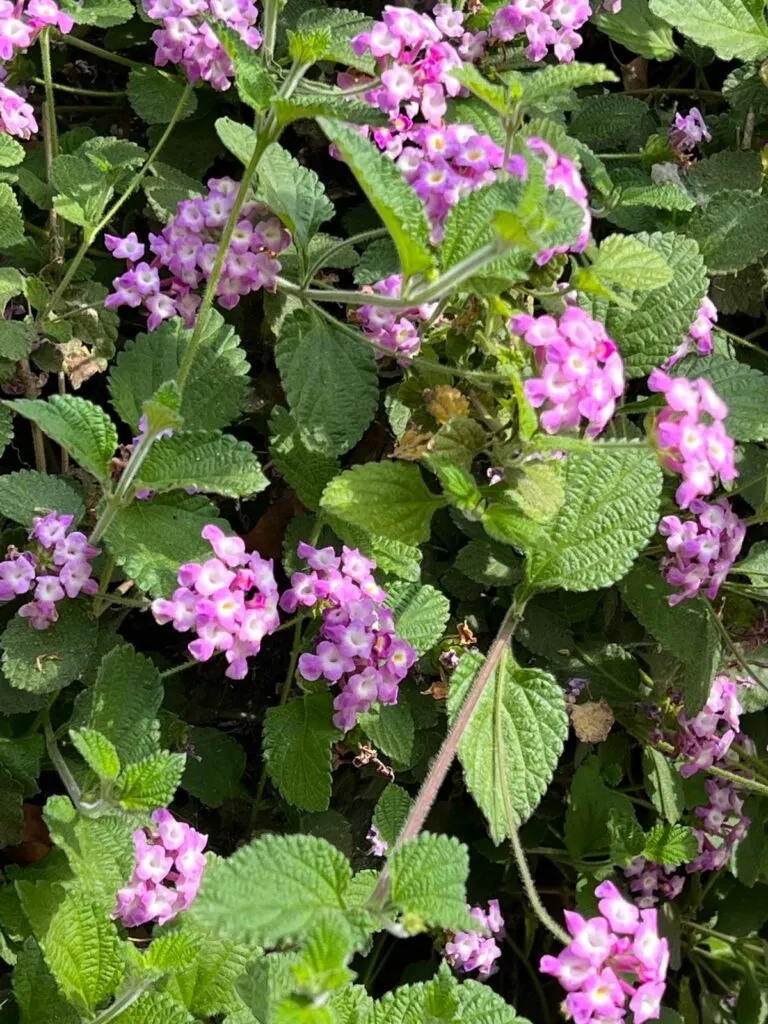
It is best to avoid getting the whole plant wet, so water at the base of the plant. It’s advantageous to grow lantana plants in pots because it allows for better air circulation, which minimizes or prevents any powdery mildew.
Powdery mildew is typically more of a concern during cool, wet weather and is particularly prominent where air circulation is poor.
SOIL
Any well-draining soil mix would work well for your lantana. I typically use either ProMix or Miracle-Gro potting mix, and will add some perlite in it to fluff it up a bit.
I place these plants every year in my cast iron urns. I normally buy hanging baskets and then transplant them into my urns.
In a short growing season such as where I live, it’s totally worth it to buy larger plants so I can enjoy them more.
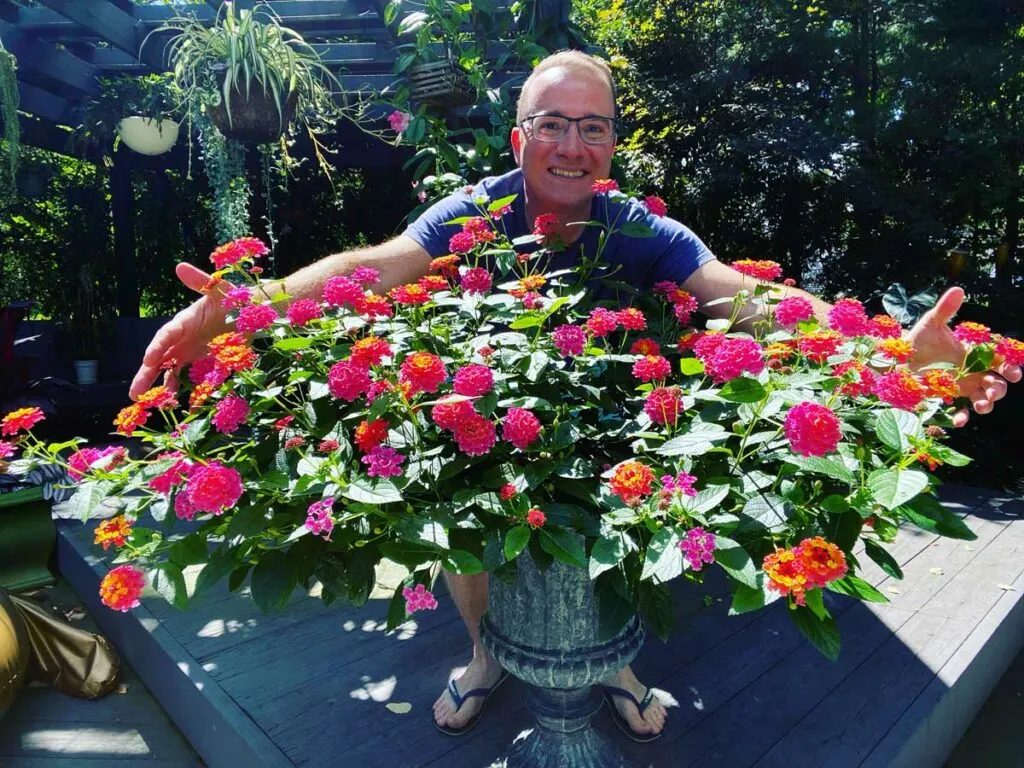
I also believe that by growing my plants in cast iron urns, they grow better as a result of warmer soil temperatures, which they like.
This will also cause the soil to dry out more quickly, so it’s important to monitor to make sure they’re watered enough.
If you tend to have very wet weather where you live, it is particularly important to have good drainage in your pots (drainage holes) and a really well-drained soil. Lantana plants do not like to stay soggy since they can develop root rot.
FERTILIZER
Lanatanas do not need a ton of fertilizer, and in fact, too much fertilizer can inhibit blooming, particularly ones with very high Nitrogen content.
Throughout the season, if I see this prolific bloomer slow down, I’ll occasionally add a bloom booster fertilizer like Miracle-Gro Water Soluble Bloom Booster Flower Food (link to Amazon).
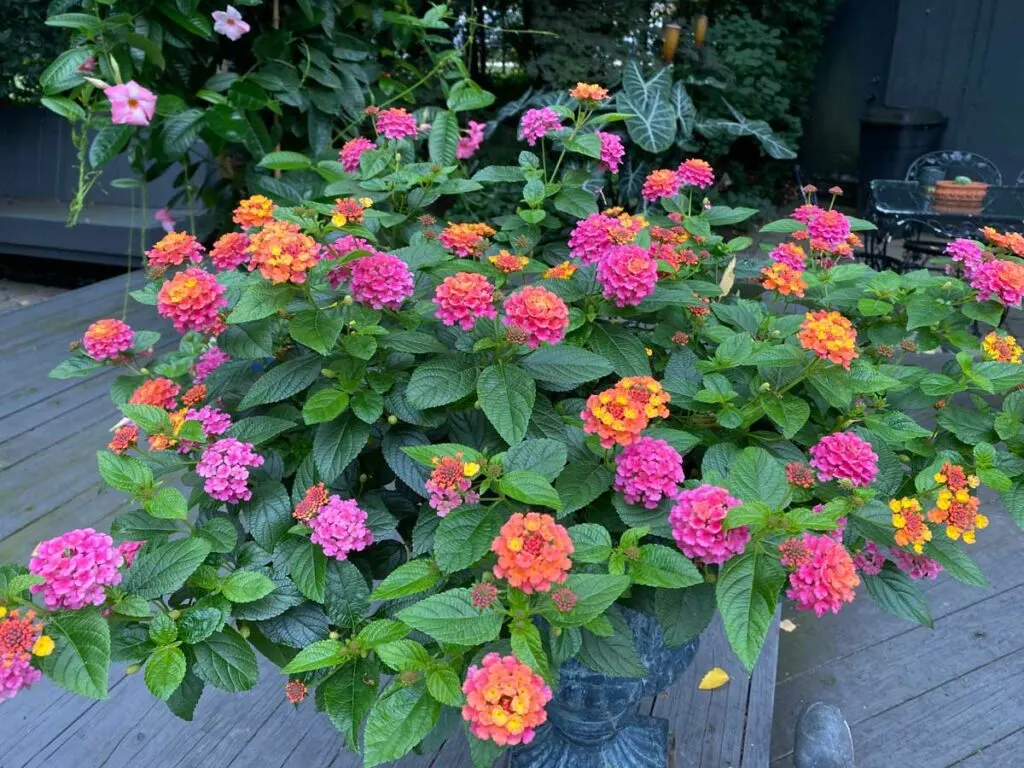
TEMPERATURE
I always wait until the danger of frost has passed in my area before planting, but I’ll also wait until minimum temperatures at night are at least consistently 50°F (10°C) or above.
The plants can take it a bit colder, but your plant really won’t grow much anyway if you plant it when it’s too cold out.
This is a perennial plant, but is treated as an annual in colder climates.
Lantanas are native to the tropics of South America, Africa, and other warmer climates, so this should give you a clue on what they prefer.
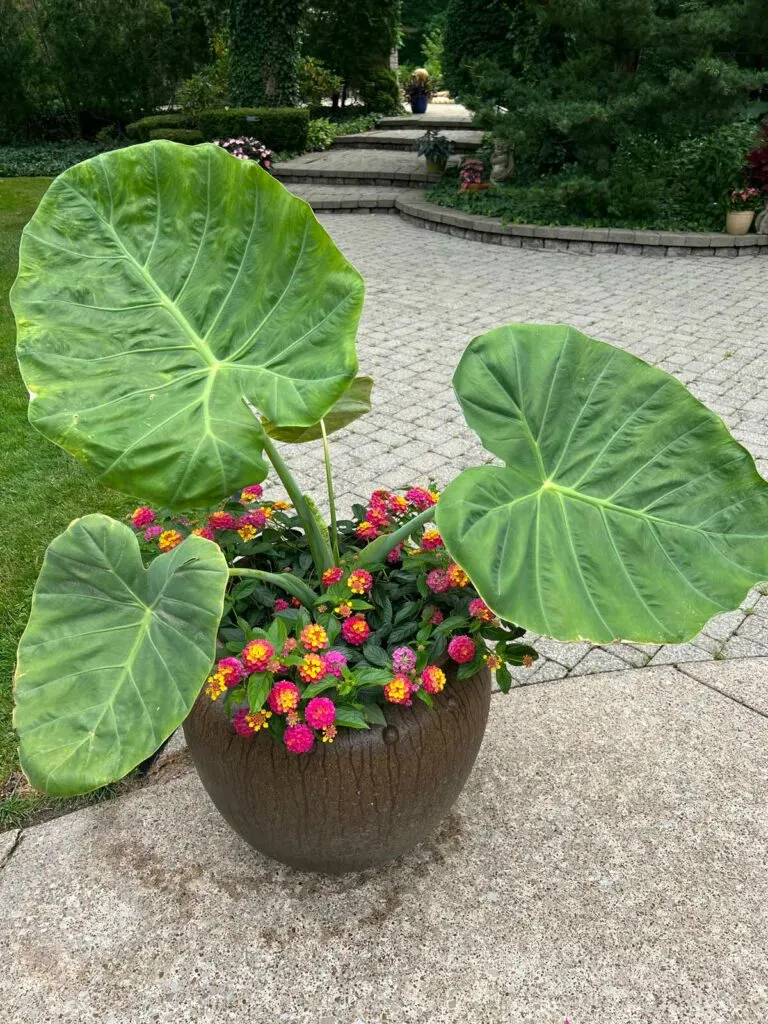
LANTANA POLLINATORS
Lantana flowers are simply irresistible to pollinators, and I’ve seen some beautiful pollinators visiting my garden each year. They attract so many pollinators that I usually see them everyday!
The colorful flower clusters contain multiple tiny flowers that are long and tubular, and thus very attractive to butterflies, hummingbirds, and other pollinators.
Here are 4 different pollinators that I’ve seen on my Lantana plants in my garden.
1. HUMMINGBIRD MOTHS
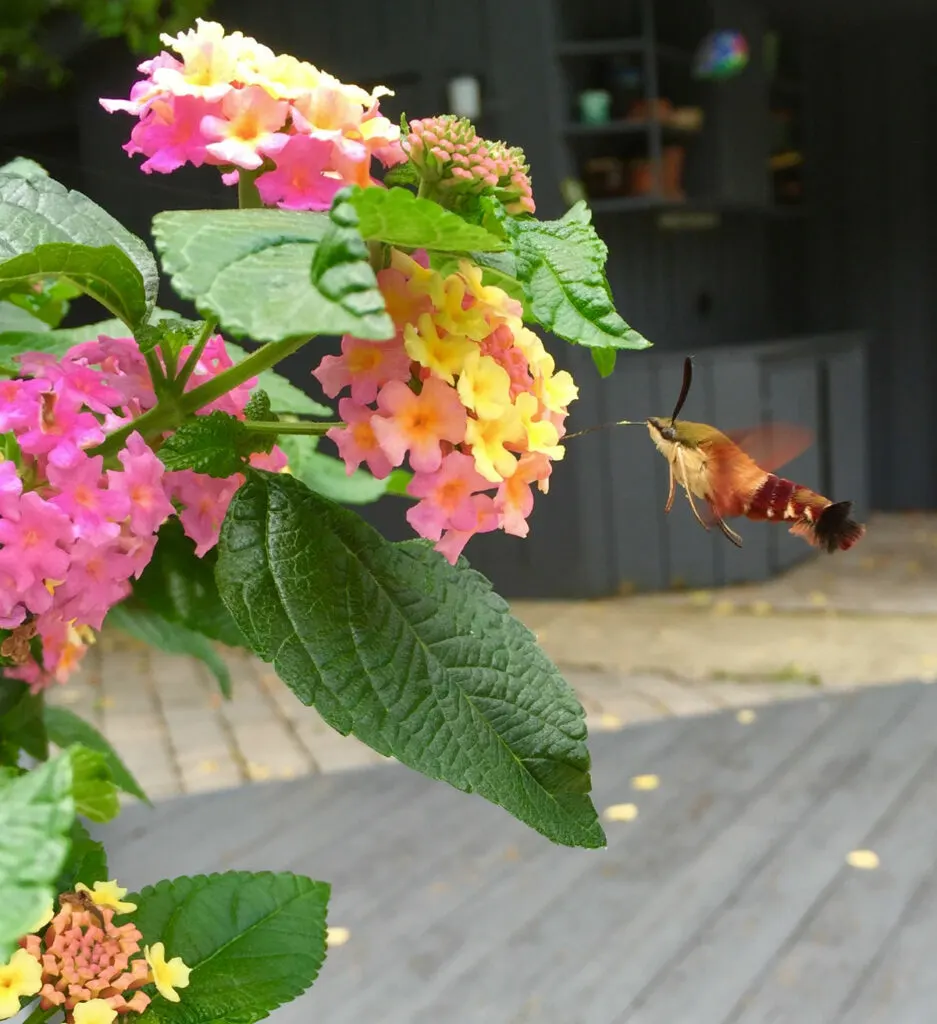
When I first saw this insect feeding on my lantana, I got very excited since I had never seen one before.
After some research, I realized this is a hummingbird moth. There are 4 species of hummingbird moths in North America. I’m not sure what species I photographed in the photo below, but it belongs to the Hemeris genus.
2. BUTTERFLIES
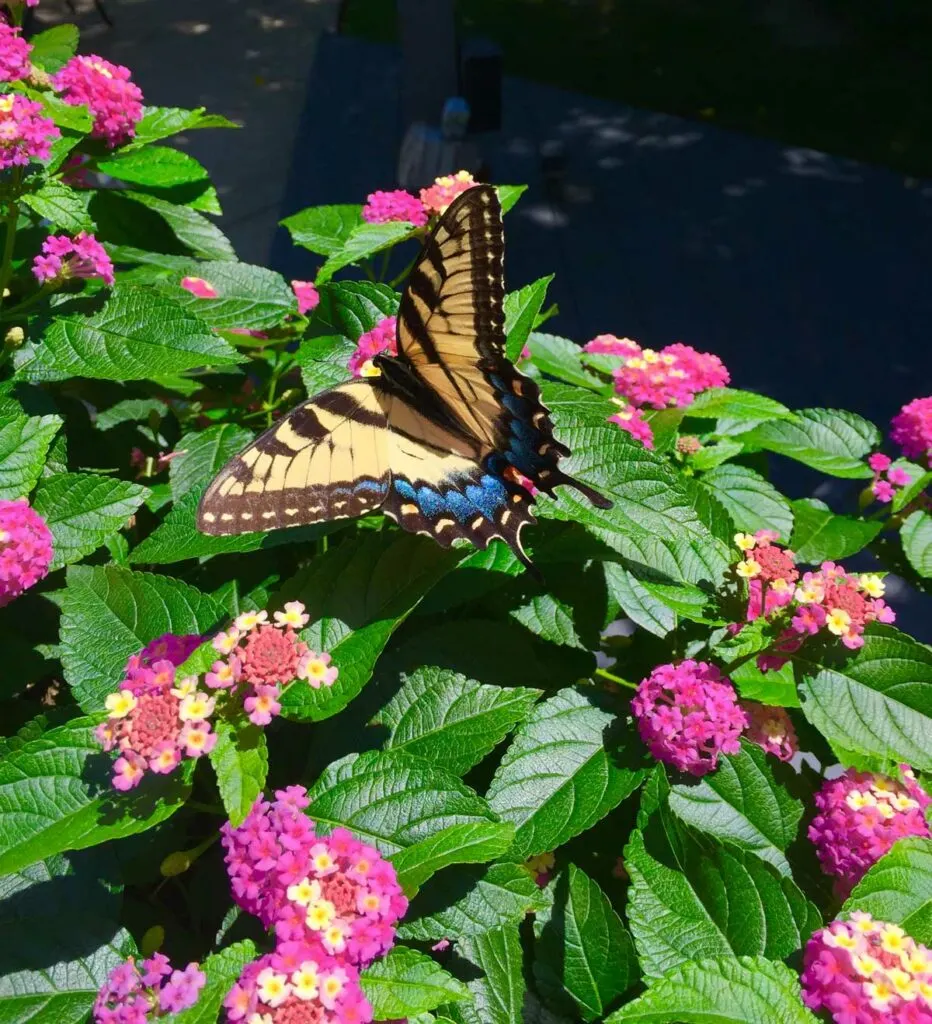
Lantana is also very popular with butterflies. This plant is an excellent addition to your butterfly garden and it will attract plenty!
3. HUMMINGBIRDS
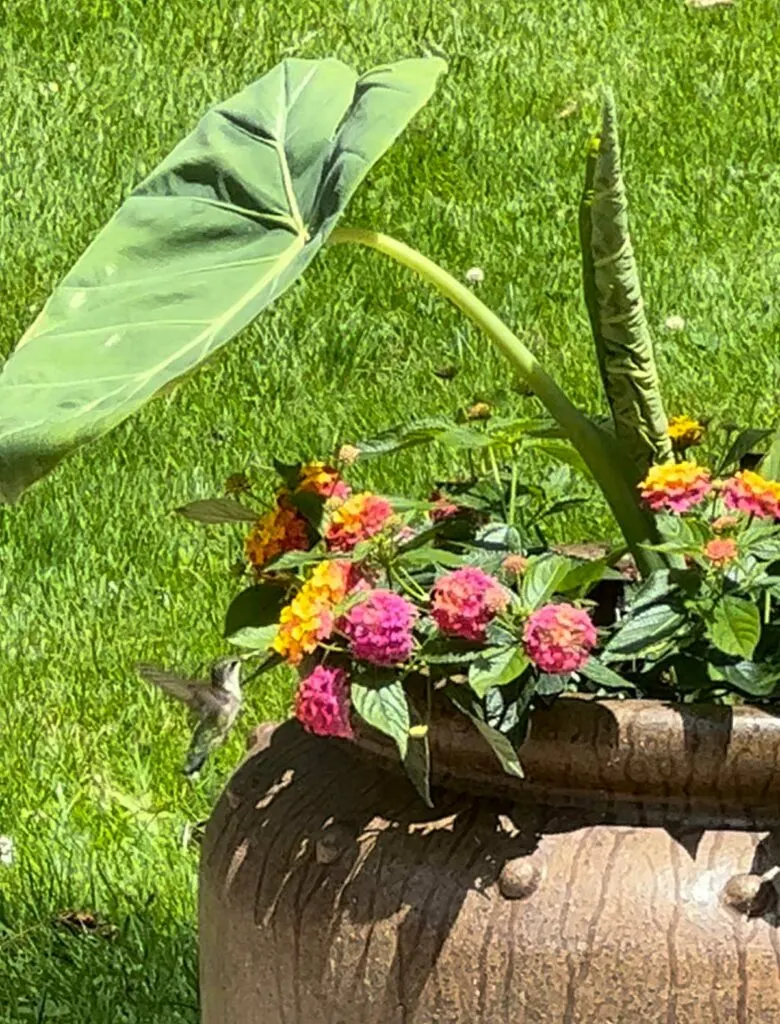
One year I grew Leucocasia ‘Thailand Giant’ and I underplanted it with a few Lantana plants. I’m always delighted when I spot hummingbirds visiting.
4. BEES
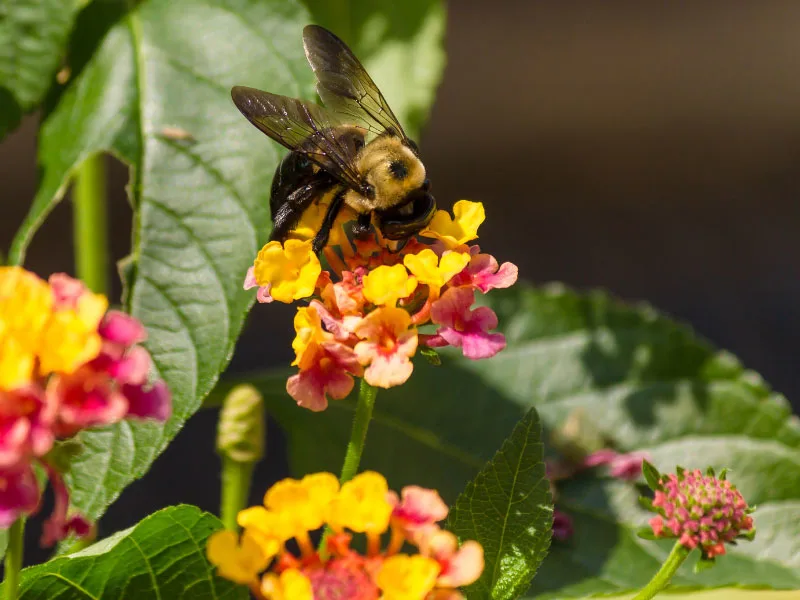
And of course, we can’t forget the bees. Lantana plants will supply an abundance nectar for your local bees.
LANTANA QUESTIONS AND ANSWERS
What colors do lantana flowers come in?
Lantanas come in a variety of colors including yellow, purple, orange, reddish, white, or even bicolor (yellow and pink).
The colorful flowers grow in clusters, and individual flowers start to open in the middle. As they mature, they will often change color, resulting in multi-colored flowers.
Is Lantana poisonous to dogs?
According to the ASPCA, Lantana is toxic to dogs as well as cats due to compounds known as pentacyclic triterpenoids. Signs to look out for include diarrhea, vomiting and labored breathing.
Can Lantata plants cause skin rashes?
Yes, contact with Lantana leaves can cause skin irritation (contact dermatitis), so protect your skin while handling the plants, and wash your hands and arms if you’ve come in direct contact with the plant.
What are the different Lantana types?
There are two main varieties of lantana: compact and trailing, with trailing varieties growing much bigger.
Be sure to make note of your particular plant’s size on the plant label when you make your plant purchases at your local garden centers.
Common lantana (Lantana camara) is a small perennial shrub. Trailing lantana (Lantana montevidensis) is lower growing and spreading. There are numerous hybrids and cultivars on the market.
Which Lantana varieties are sterile?
In warm climates, some Lantana varieties are invasive, so plant breeders have developed sterile varieties that don’t set seed.
This prevents seeds from escaping into the wild and it also helps blooming be more profuse since the plant is not wasting any energy on setting seed.
Some of the beautiful sterile varieties out there are ‘Alba’, ‘Bloomify’ series, ‘Gold Mound’, ‘Hot Blooded’, ‘Patriot’ series, and ‘Sunburst’ series.
Is Lantana a perennial?
Lantanas are actually perennial plants but are only hardy to USDA zones 8 and higher. In colder regions (zones 7 and lower), they are typically treated as annuals.
If you live in the United States and you’re not sure what zone you live in, you can use this simple USDA Plant Hardiness Zone Map. Simply enter your zip code and it tells you what growing zone you live in.
Do deer eat Lantana?
Deer and rabbits typically avoid eating these plants because of the plant’s scent. I’ve personally never seen my Lantana plants eaten by deer in the many years that I’ve grown them.
How to keep Lantana blooming all summer?
– Give your plant as much direct sun as possible.
– Deadhead spent blooms to encourage more flowers.
– Avoid overfertilization (once a month in pots should be good enough) and avoid high nitrogen fertilizers.
– Don’t keep your soil too wet. Allow the top 1-2 inches of soil to dry out before watering again.
I hope you’ve enjoyed this post on how to grow Lantana in pots. Do you grow Lantana? Comment below. I’d love to hear! And you may want to check out my post on plants that bloom all summer long in your garden.

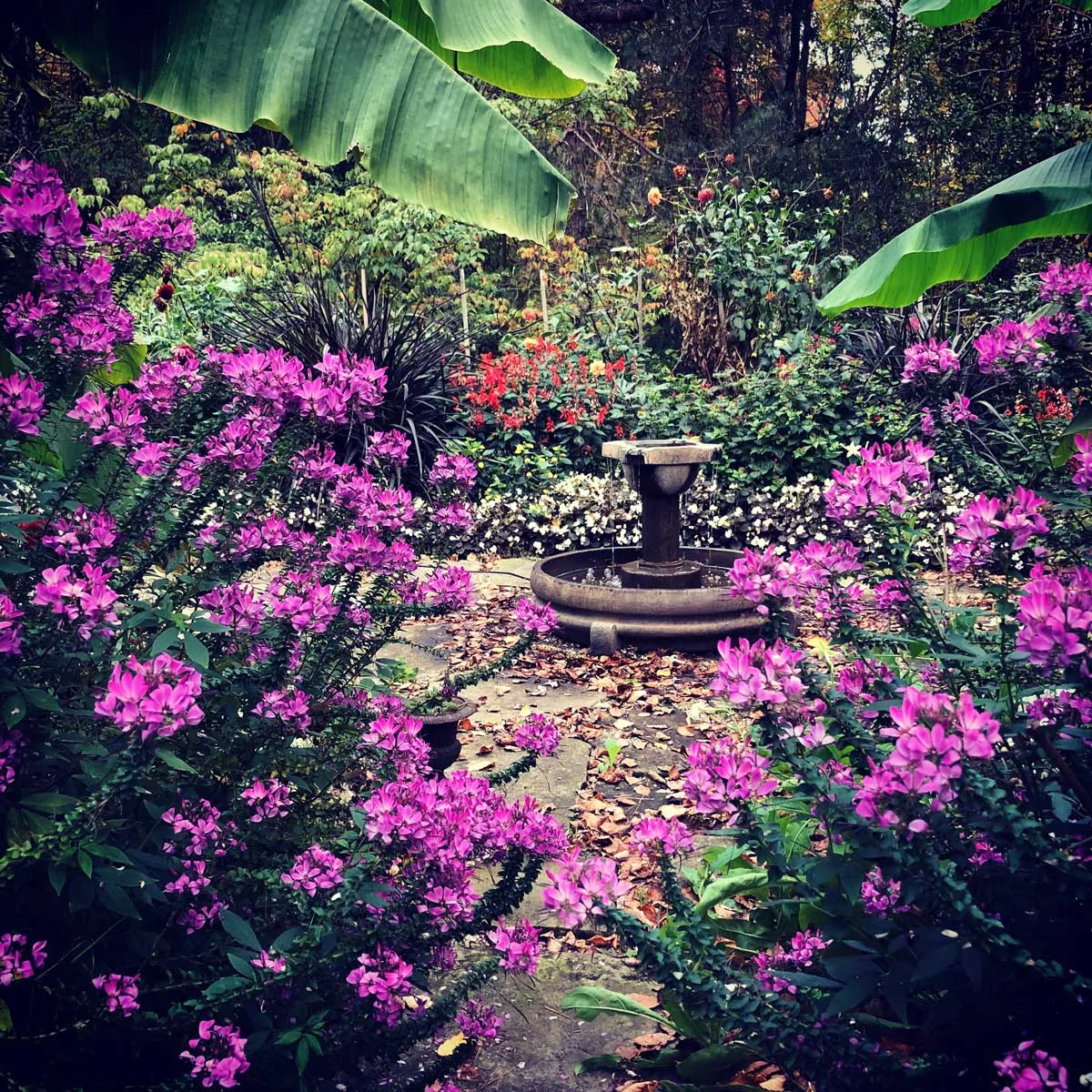
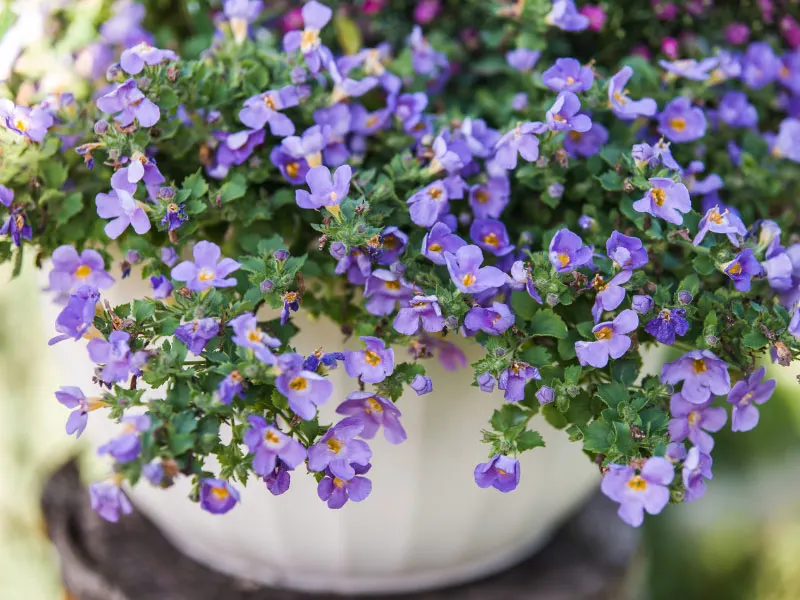
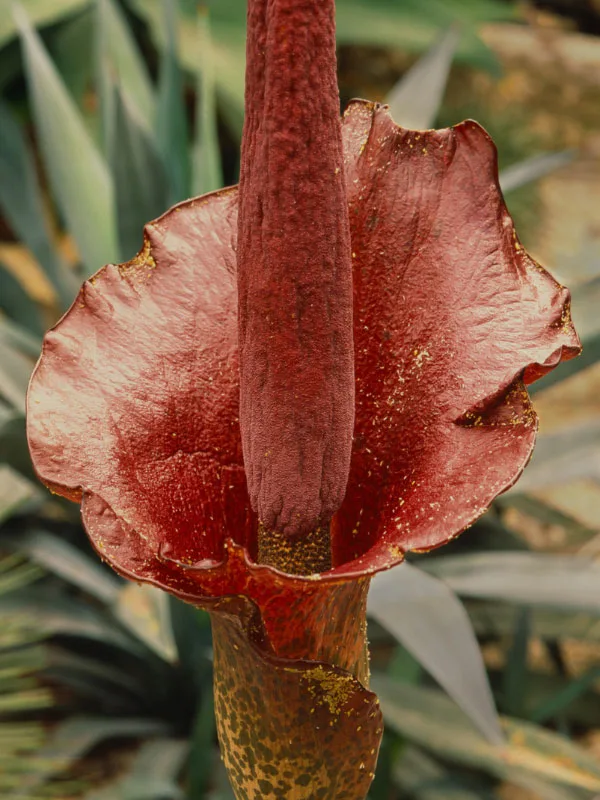
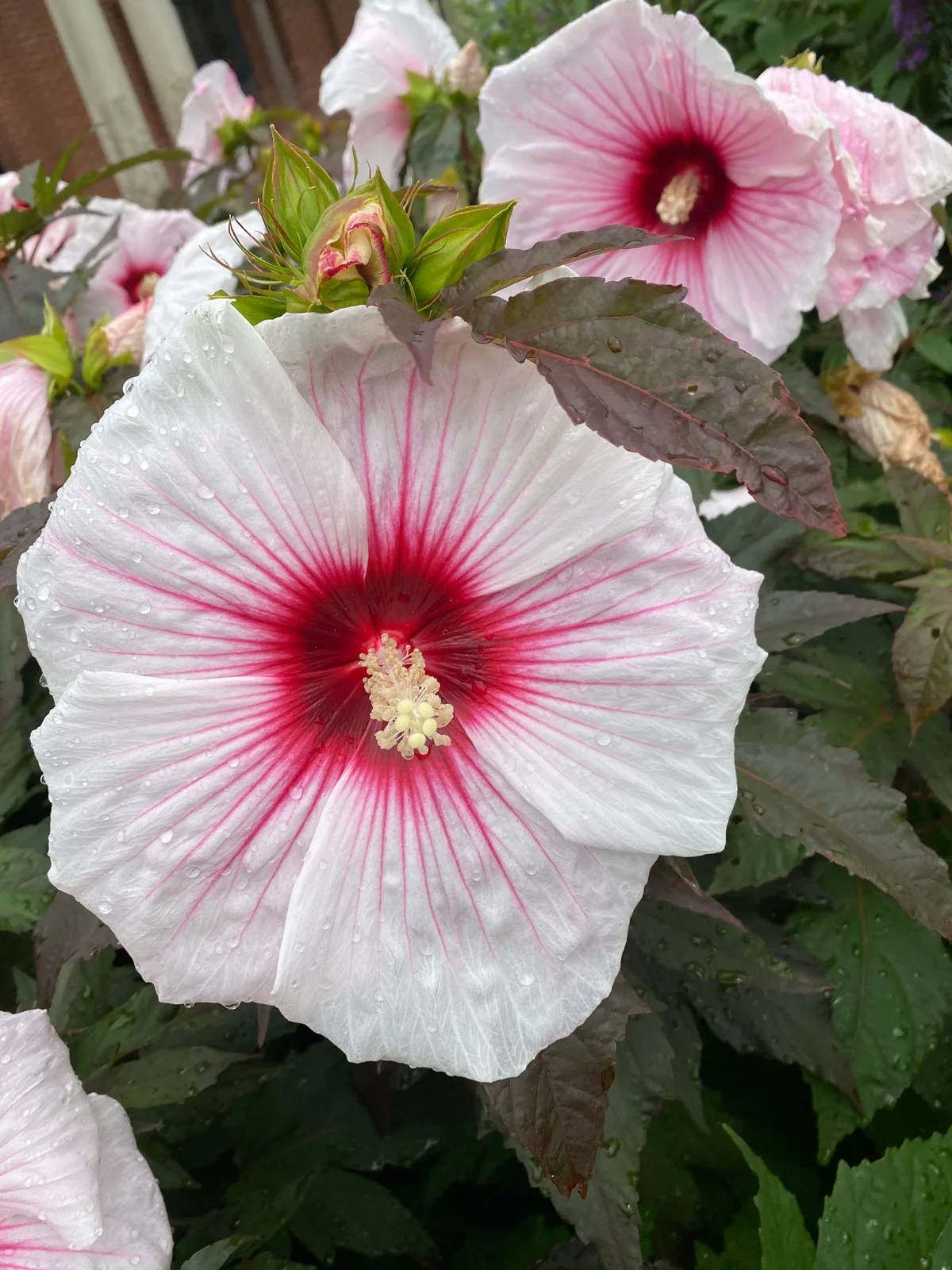
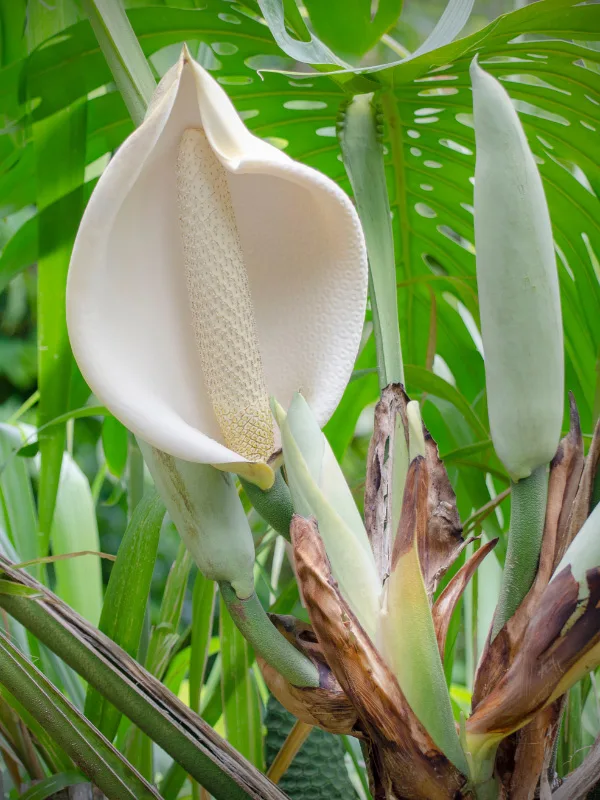
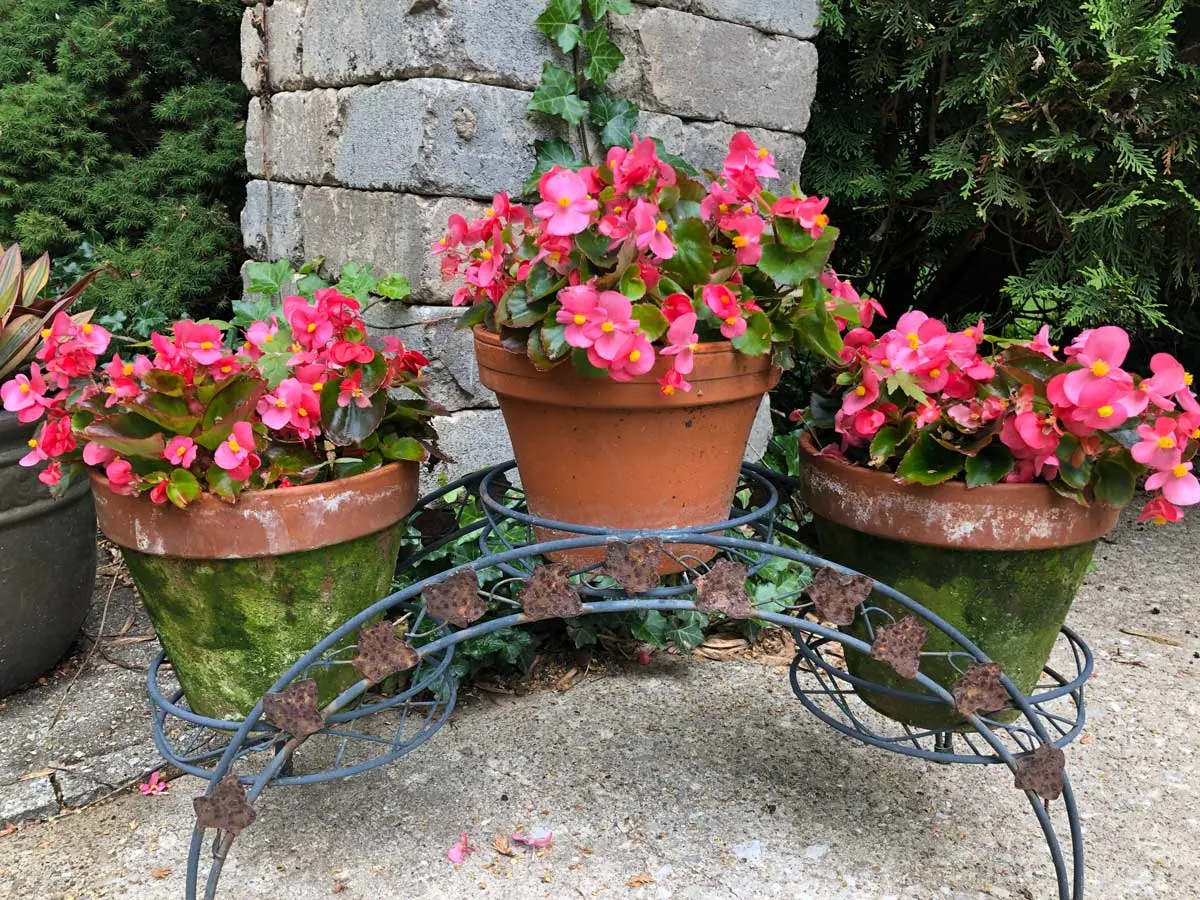
Laura
Saturday 18th of May 2024
I planted some Lantanas last year and I have an outbreak of white fly killing them! What should I do to treat them? Thank you
Raffaele Di Lallo
Saturday 18th of May 2024
Hi Laura! You can try using an insecticide on them, or have it on hand in case you get another breakout. There are a number of products that you can use. You can even start with insecticidal soap and see if that works first since it is not as harsh.
Terry
Wednesday 15th of May 2024
I have planted lantana in two pots in my backyard this year and I certainly hope they turn out as beautiful as yours have. Thank you for sharing your growing tips.
Raffaele Di Lallo
Thursday 16th of May 2024
You're very welcome Terry! Good luck :-)
Patsy Kitchen
Monday 31st of July 2023
I love lantana. Have large one in backyard that comes back each year. This year I planted some in my window boxes
Raffaele
Monday 31st of July 2023
They're one of my favorites in pots! Having them in your window boxes sounds lovely!